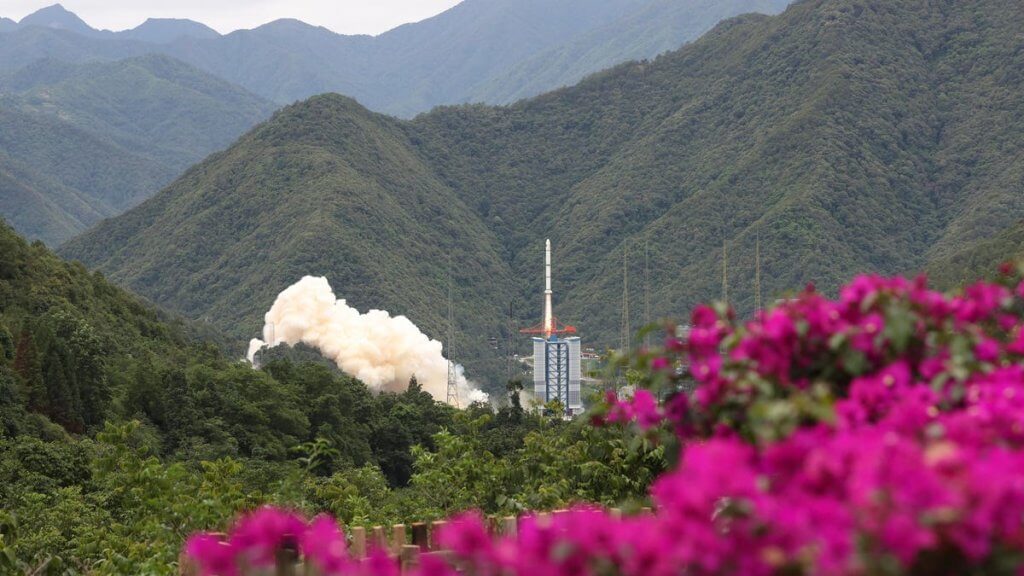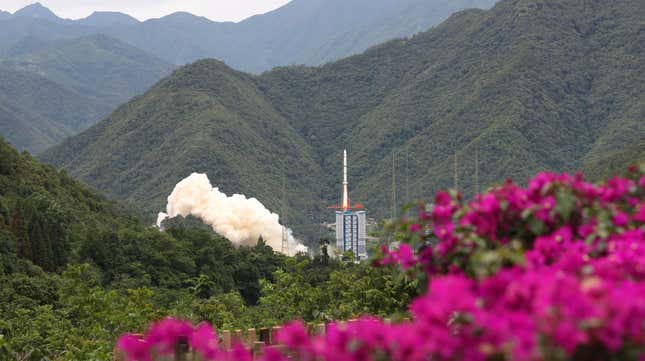Chinese Rocket Seen Falling on a Village Was Spewing Highly Toxic Chemicals

Chinese Rocket Seen Falling on a Village Was Spewing Highly Toxic Chemicals (Image Credit: Gizmodo-com)

A video circulating online appears to show debris from a Chinese rocket falling above a populated area, with residents running for cover as a heavy cloud of dark yellow smoke trails across the sky in a frightening scene.
The suspected debris may have come from China’s Long March 2C rocket, which launched on Saturday, June 22, carrying a joint mission by China and France to study Gamma-ray bursts. The launch was declared a success, but its aftermath was captured by videos posted to Chinese social media sites.
The videos show what appears to be the first stage rocket booster of the Long March 2C rocket tumbling uncontrollably over a village in southwest China, while local residents cover their ears and run for shelter from the falling debris. There are no reports of injuries or damage to property. That said, unverified video and images show a gigantic cloud erupting at the site of the crashed rocket, and the booster itself seemingly next to a roadway.
The first stage of the rocket can be seen leaking fuel, the color of which is consistent with nitrogen tetroxide. The chemical compound is a strong oxidizing agent that is used for rocket propulsion but it can be fatally toxic, according to Jonathan McDowell, astrophysicist at the Harvard-Smithsonian Center.
“It’s known in the rocket industry as BFRC, a big fucking red cloud,” McDowell told Gizmodo. “And when you see a BFRC, you run for your life.” Nitrogen tetroxide was accepted as the rocket propellant oxidizer of choice in the early 1950s by the U.S.S.R. and the United States, however it became less commonly used over the years because it is extremely toxic, according to NASA.
If it comes in contact with skin, eyes, or respiratory system, it can destroy human tissue, and if inhaled through the lungs, it can lead to a build up of fluids or, in extreme cases, death. “It’s pretty scary, but this is just how the Chinese do business,” McDowell told Gizmodo. “They have a different level of acceptable public risk.”
China has been known to be careless with its rocket launches. Launch sites in most other countries are built along the coast, with the boosters usually landing in the ocean. The Chinese launch sites, Xichang in the southwest, Jiuquan in the Gobi Desert in the northwest, and Taiyuan in the north, are inland so the falling boosters usually end up on or near inhabited areas. In December 2023, the booster of a Long March 3B rocket landed near a home in the southern Hunan Province.
There is a slight shift in China’s attitude towards falling boosters. The country’s newest launch site, the Hainan Commercial Launch Site, is located near the coastal national Wenchang spaceport on the island province of Hainan in the South China Sea. China’s next generation rockets will use kerosene and liquid hydrogen, weaning themselves off of toxic propellants. The older rockets, however, are still in the game.
“I think over a 10 year period, we may see the older rockets phased out but they’re not in any hurry to do so,” McDowell said. “They’re still launching one a week or something like that, and they are really quite dangerous.”
For more spaceflight in your life, follow us on X and bookmark Gizmodo’s dedicated Spaceflight page.








